From playing with worms to watching things bloom, teach a child to garden and they will grow a lifelong love of nature.
Little sprouts: Children in the garden
Tucked behind the imposing Goodman Building by the Hackney Road entrance to our ever-popular Adelaide Botanic Garden, is a wonderfully productive and seasonally changing space that is helping children from early learning to primary ages turn screen-time into green-time and discover the joys of gardening.
Opened in 2015, the Little Sprouts Kitchen Garden was designed to help children develop a lifelong learning and connection with plants through a series of education programs run by the botanic garden, where kids can see, touch and taste fresh fruit, vegetables and herbs and – importantly – get their hands dirty.
There’s a lot packed into this garden: large beds filled with an abundance of seasonal produce, meandering sawdust paths, an orchard, foliage-covered climbing structures, compost bins, worm farms, native bee hotels, work benches and a large basket weave dome where children can gather for storytelling and garden talks.
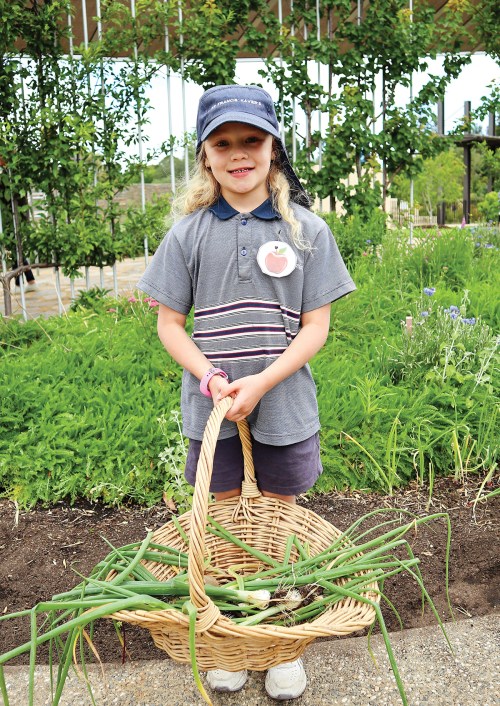
This vibrant green space is the ideal “classroom” for the Little Sprouts Kitchen Garden Learning Program to run its educational encounters. Kindergartens, pre-schools and primary schools from across Adelaide and the state have brought countless classes of students over the past seven years to spend time learning, observing, creating and developing a love of plants. Discovering that tomatoes grow on a bush or peas can be picked and eaten fresh can be a revelation for many children.
Our community’s increasing interest in home-grown food and pursuit of healthy diet options has been an impetus for the creation of this garden and its programs. Each program, developed by the botanic garden, has been designed to align with National Australian Curriculum Requirements and integrate into a school’s Science, Technology, Environment & Maths (STEM) program.
It is such a delight to see the excitement and awe on the face of every child who enters the garden. Whether they are overwhelmed by the number of plants, distracted by flitting butterflies or itching to pick a seasonal veggie, the simple pleasure of being amongst nature is so evident.
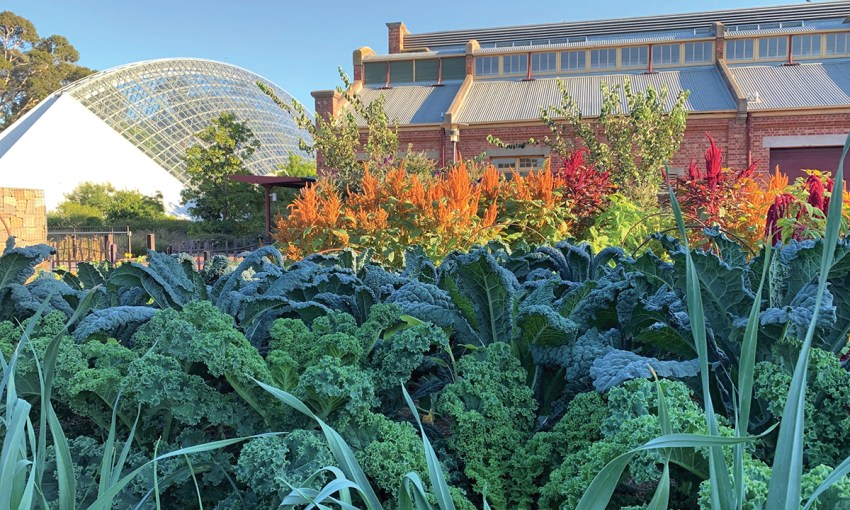
Children attending may not realise all the fun they have at the kitchen garden is carefully and meticulously orchestrated. The programs are inquiry-based and framed on best practice educational principles. Children undertake activities that utilise play and exploration to excite their natural wonder and engage all the senses.
The Little Sprouts Kitchen Garden Early Years Learning Program (Kindergarten to Year 2) allows children to explore the wonders of a kitchen garden environment through a range of fun and engaging learning opportunities.
Guided by a qualified kitchen garden educator, the program is hands-on and sensory in nature and aligned to the early years learning framework. The garden also showcases the benefits of growing fresh produce, instilling healthy habits from a young age.
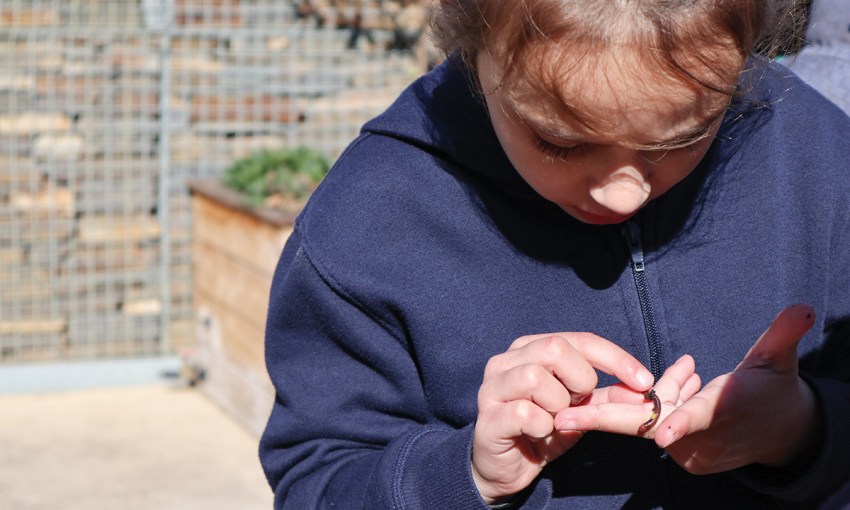
The Little Sprouts Kitchen Garden Primary Program (Years 3 to 7) has a focus on STEM learning. Students and their teachers use the kitchen garden environment as a research tool to develop their scientific biological conceptual knowledge of the structure and function, diversity and evolution and interdependence of plants.
“Pests and guests” activities, where children touch and hold wriggly worms are always popular! Along with lots of laughter and chatter, it’s a brilliant conversation-starter about why worms are so good for the garden and what is needed to invite them in to stay. Plus finding out some worm fun facts – did you know, worms breath through their skin and have no lungs, they digest half of their body weight on average each day and, being around for around 600 million years, worms are older than the dinosaurs?
Cooking is another popular activity, with key ingredients of dishes such as pesto and soup enthusiastically gathered by busy hands, then combined to create tasty and healthy treats. The opportunity to sample fresh produce is something many children rarely experience. Even the fussiest eater can be tempted to try something new when they spend time in the kitchen garden. Young bean shoots are a surprising taste sensation!
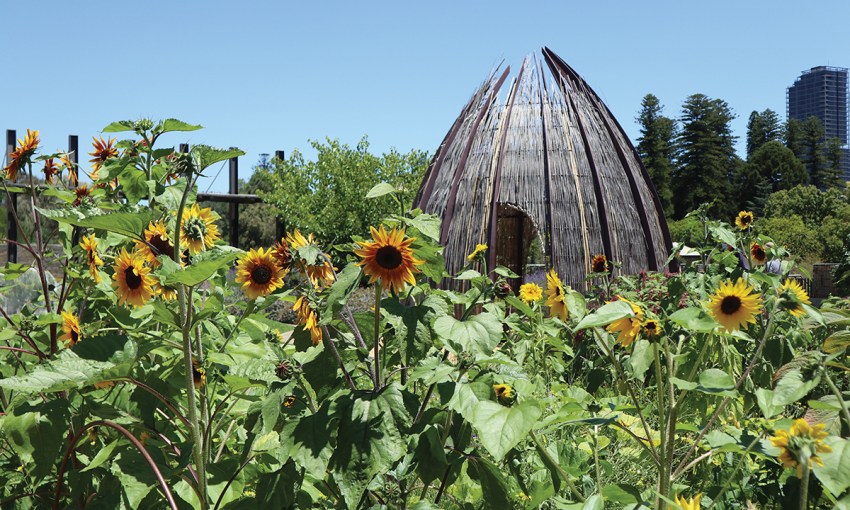
Garden topics covered include maintaining your garden, from small to large spaces, compost and mulch, what to plant and when to grow, plus watering and harvesting. Knowing when to harvest a plant is very important. Harvesting too early can possibly result in small vegetables and fruit. Harvesting too late may turn taste and texture too starchy, bland or bitter. Root vegetables such as carrots, beetroots, radishes, turnips and parsnips are much sweeter when they are harvested while young.
Seeds are always a fascination for children. Watching them sprout and seeing newly-emerging roots and leaves develop into plants is a magical event. Appreciating this process takes time, attending students fill pots and sow seeds to take back to their classrooms or homes to be keenly observed with resulting plants placed in the kindy or school kitchen garden to be further enjoyed and studied.
Visiting teachers are also beneficiaries of The Little Sprouts Kitchen Garden Primary Program. With many schools having their own kitchen gardens, visits to the botanic garden provide a wonderful resource for teachers to build on their existing horticultural knowledge and expand the range of potential activities students can undertake in their school-based gardens and at home.
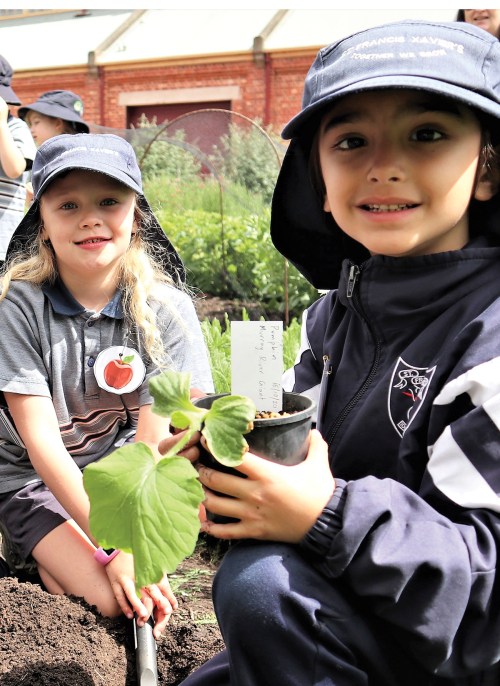
If the glowing testimonials of both children and teachers are anything to go by, the Little Sprouts Kitchen Garden is a hit with them all.
Botanic garden staff and enthusiastic volunteers are also key to the success of both the garden and program. Maintaining the gardens to a classroom standard is vitally important. Whether its mowing, weeding, feeding or trimming, staff and volunteers alike always seem to have a satisfied smile on their faces.
While the kitchen garden was created as an educational precinct, visitors to the Adelaide Botanic Garden can wander through this space when The Little Sprouts sessions are not being held.
The Little Sprouts Kitchen Garden is doing a brilliant job in helping a new generation develop a lifelong fascination of and appreciation for plants.
To find out more, visit botanicgardens.sa.gov.au/education and follow the links to The Little Sprouts Kitchen Garden Learning Program.
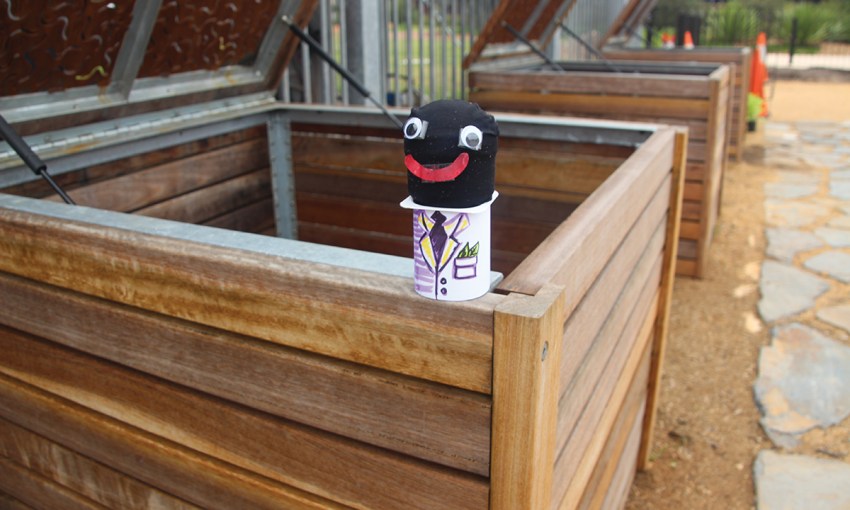
Grass Heads
Get your own “little sprouts” interested in gardening with this fun and simple hands-on activity. It takes about a week for the grass head to start sprouting hair and, if you keep watering, it will keep growing.
You will need:
Stockings
Grass or chive seeds
Potting mix
Small empty yoghurt container
Spray bottle of water
Paper
Glue
Extras: black textas, googly craft eyes, cotton wool, pipe cleaners, rubber band
Cut the feet out of a pair of stockings or stocking socks just above the ankle. Sprinkle some grass seeds into the bottom of the stocking foot then fill it with potting mix. Twist the stocking until it is the shape and size of a tennis ball, then tie it off, leaving about 10 centimetres dangling down at the bottom. Half-fill the yoghurt container with water and place the head on top, so the stocking tail is dangling into the water. Use a spray bottle of water to wet the grass head.
To decorate your grass-head, draw a tuxedo/dress/some form of clothing on a piece of paper and stick it to the outside of the yoghurt container. Use a piece of cotton wool to give your grass head a nose and make a funny face using googly eyes, and pipe cleaners for eyebrows and a moustache.
Place the completed grass head on a windowsill that gets plenty of sun. Check each day to make sure the stocking head remains damp. In a week or so the grass shoots will start to sprout out the top of the head like hair – when it’s really long, you can trim it into fun hairstyles. If you’re using chive seeds, the haircut trimmings can be added to a salad or sandwich.
This article first appeared in the April 2022 issue of SALIFE magazine.



